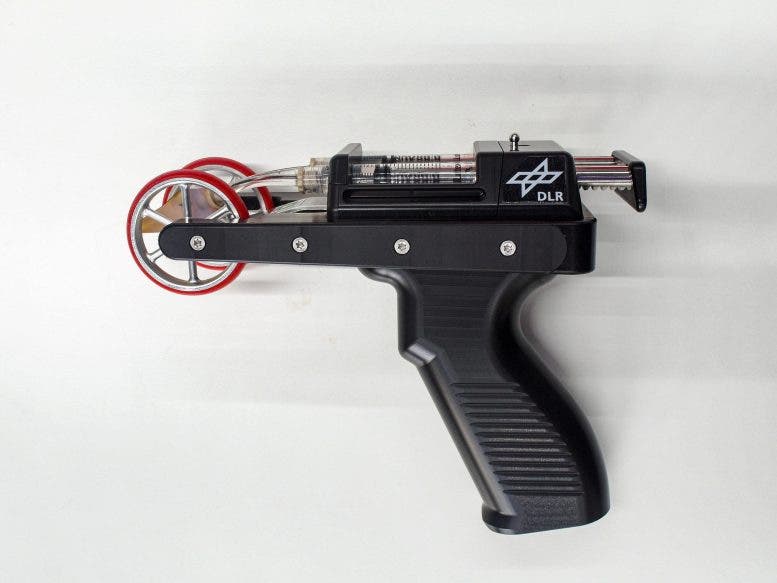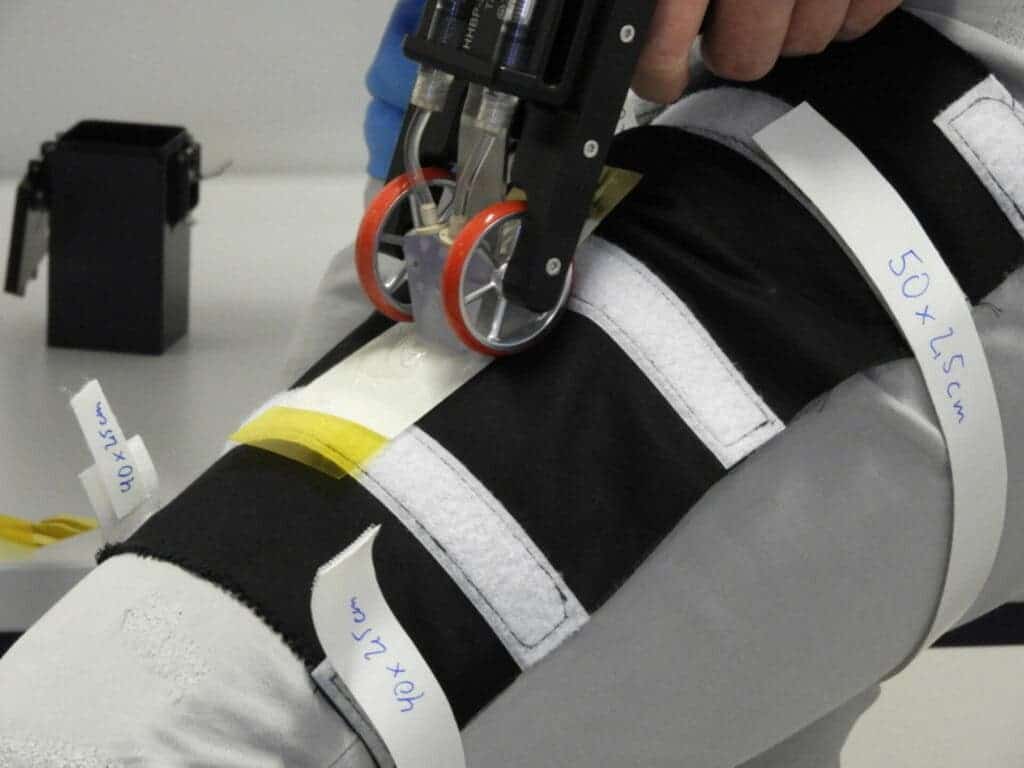
Although the International Space Station has had a fantastic safety record during its almost 25-year existence, that doesn’t mean astronauts don’t face tremendous risks. In the event of a medical emergency, the crew doesn’t have access to a fully equipped modern hospital and doctors, for instance. There is absolutely no kind of help from the outside possible, which is why all astronauts are required to pass medical training before arriving at the space station.
As we extend our wings to places outside our home planet, having a space-compatible medical infrastructure is becoming increasingly paramount. This is why astronauts aboard the station are currently testing a novel bioink 3D printer that is capable of creating tissue structures made from their own skin cells. The handheld bioprinter, which looks a lot like a tape dispenser, would be used to apply a tissue-forming bandage to the injury site in real-time.
The Bioprint FirstAid was developed by the German Space Agency (DLR) and recently arrived at the International Space Station with the occasion of SpaceX’s 24th cargo resupply mission.
Traditional 3D bioprinters are bulky and require a lengthy culturing phase in order for the patches to mature. This device, on the other hand, is small enough to hold in your hand.
“On human space exploration missions, skin injuries need to be treated quickly and effectively,” says project manager Michael Becker from the German Space Agency at DLR. “Mobile bioprinting could significantly accelerate the healing process. The personalized and individual bioprinting-based wound treatment could have a great benefit and is an important step for further personalized medicine in space and on Earth.”

For the time being, the technology demonstration will not use real human cells but fluorescent microparticles. When combined with two fast-curing gels, these microparticles create a plaster-like wound covering, which will be printed onto an astronaut’s foil-covered arm or leg and sent back to Earth for further testing.
The tissue layers may work differently than the way they operate here on Earth, which is why scientists are taking precautions before allowing such a device to be used in the event of a real medical emergency. For instance, we know that micro-gravity increases the time needed for healing.

Bioprinted skin patches for wound healing would contain the cells from the target patient, thereby reducing the risk of rejection. The technology may even prove useful during medical emergencies on Earth, as doctors and medical workers could use the device at the site of injury, without having to move a patient to a hospital.
During the same resupply mission that brought the Bioprint FirstAid to the ISS in December 2021, NASA also sent studies on monoclonal antibodies for cancer therapies, changes in immune function, plant gene expression changes, and citizen science projects. Astronauts also received Tide Infinity, a fully degradable detergent specifically designed for use in space. The space station’s crew wears an item of clothing several times then replaces it with brand new clothes delivered by resupply mission, so these innovations open the way for the first laundromats outside Earth.
“From a scientific standpoint, the major challenges for off-planet laundering include the strict requirements for compatibility with the air purification systems, the limited amount of water available per each wash treatment, and the requirement that the laundry wash water be purified back to drinkable water,” says Mark Sivik, a research fellow at P&G, who was involved in the development of the space-compatible detergent.









